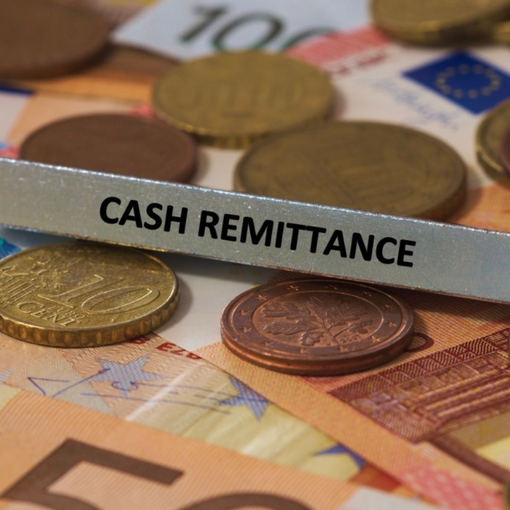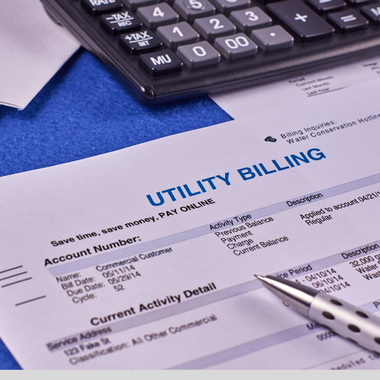
- Five minutes read
Rethinking remittances with eCash
One billion people around the world depend on remittances to make ends meet and improve their economic situation. But rapid digitalization has made it harder for cash-reliant migrants to send money to their loved ones, and for recipients in cash-based economies to use it. eCash can bridge the gap and make remittance services more accessible for everyone.
Remittances represent as much as 60% of recipients' household income.
But while the volume of money migrants are sending home is on the rise — in 2021, remittance flows hit $589 billion, up 7.3% over 2020 — remittance services are increasingly inaccessible.
In 2019, 90% of remittances were sent and received in cash. Fast forward to 2021, and $295 billion — around 50% of worldwide remittance flows — were being sent through digital means.
Given that a significant chunk of people are heavily reliant on cash, this rapid digitalization is creating a very real risk of exclusion and worsening financial hardship. Which is why it's high time banks, neobanks, and other providers of remittance services considered adding eCash to their capabilities.
A matter of relevance
The most obvious challenge of digital remittances is that, in large numbers of cases, the money arrives in a format that simply isn't convenient or relevant to recipients' day-to-day lives.
The top five countries for receiving remittances in 2021 — India, China, Mexico, the Philippines, and Egypt — all have large numbers of people who are unbanked or underbanked and, so, depend on cash.
With 67%, 66%, and 63% of their respective populations having no access to banking facilities, Egypt, the Philippines, and Mexico are three of the most unbanked countries in the world. And while, at 22% and 20% respectively, the proportion of unbanked people in India and China is lower, it's still fairly significant.
But accessing and using money that's been sent digitally is a challenge even for recipients with bank accounts. Almost half of all remittances go to rural areas, where economies are predominantly cash-based and the nearest bank branch or ATM can be several miles away.
Crucially, the cost of sending money digitally — particularly in areas of the world deemed to be at high risk of fraud — is eye-watering. The average fee hovers at 6.4%, rising to 8% in Sub-Saharan Africa.
As a result, less money is going in recipients' pockets at a time when the state of the world economy is forcing more and more people into economic hardship.
The other side of the coin
The accessibility challenges that the digitalization of remittances is bringing about don't just affect recipients. They're impacting senders too.
In the US — the world's top source of remittances — immigrants are more likely to be unbanked or underbanked. And they're also more likely to work low-income jobs that are paid at least partly in cash.
But this holds true elsewhere in the world too.
In many countries, getting the necessary documentation to open a bank account can be a chicken-and-egg situation. Alongside a document to prove your identity, you'll typically need a document to prove your address. But the proof-of-address documents banks accept — utility bills, rental agreements, and credit card statements, for instance — are difficult to obtain when you're new to a country and don't have a bank account.
For undocumented migrants, refugees, and other vulnerable groups, even producing proof of identity is an issue. The World Bank estimates there are around 1 billion people globally who don't have identification documents. Which means it's simply impossible for them to open bank accounts or work jobs in the mainstream economy, let alone send money to their loved ones.
Bridging traditional and digital remittances with eCash
The United Nations estimates that around 75% of global remittance flows go towards food, rent, utility bills, and other essential expenses, while the remaining 25% are typically saved, invested, or used in other ways that help recipients improve their lives.
This means that, besides being a lifeline, remittances are also critical to breaking the cycle of financial hardship. So, while there's no stopping digitalization, ensuring the most vulnerable in society aren’t excluded from the financial system should be a moral imperative.
eCash is ideally placed to make remittance services more inclusive, because it enables people to send and receive cash through digital means, even if they don't have access to a bank account.
For senders, transferring money using eCash is as easy as logging on to their provider of choice — whether it's a bank, neobank, or other remittance service — choosing eCash, and downloading a barcode.
They can then scan the barcode at a participating Paysafecash service location and deposit cash to complete the transaction.
Similarly, recipients receive a barcode which they can scan at their closest location and withdraw cash.
The process couldn't be simpler. But, more importantly, it reflects the practical realities of both senders and recipients, enabling them to complete transactions using the means they rely on for all their other day-to-day needs: cash.
Digitalization might be inevitable, but exclusion isn't.
By 2025, it's thought that the remittance market will be predominantly digital.
Many commentators argue this will make remittances safer, more user-friendly, and more transparent, and lower overheads for service providers. But while digitalization undoubtedly has compelling benefits, there's also a risk it will put vulnerable people in even greater difficulty by making it impossible for them to send or receive money.
Convenience isn't one-size-fits-all. While most of us might prefer making digital transfers, there are many people for whom the simplest option is to use physical cash. By adding eCash to their services, banks, neobanks, and other providers of remittance services can reach these customers too, broadening their market and ensuring nobody is left behind.




